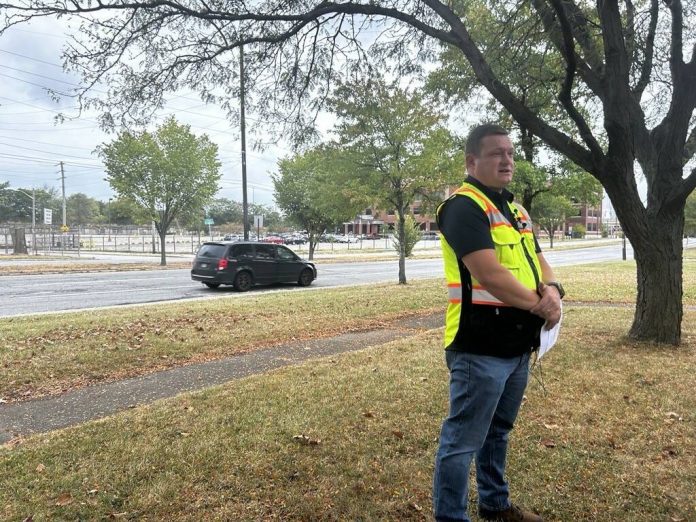By Taylor Wooten, Indianapolis Business Journal
Indianapolis officials on Monday announced plans for a multi-year reconfiguration of Madison Avenue in an effort to slow traffic on the south-side thoroughfare.
Plans call for a $47 million “road diet” of Madison Avenue, including the removal of two vehicular lanes and the addition of new pedestrian and cyclist space. The project is being funded through multiple federal grants distributed by the Indianapolis Metropolitan Planning Organization.
Construction workers will break ground on the first phase of the project, from Ray Street to Pleasant Run North Drive, in spring 2025. Work will continue in two additional phases, with completion slated for winter 2028.
City officials said the first phase will include repaving of 16 miles of street, adding more than 15,000 linear feet of new curbs and sidewalks, and introducing the 7,200-foot Interurban Trail, which will be expanded at a later date to connect downtown to Indianapolis’ far-south side.
Department of Public Works Director Brandon Herget said City-County Council member Kristin Jones first told him of constituent concerns about drag racing on Madison Avenue in 2020, when he was a council staffer. He said the process of acquiring federal funds took several years. Funding for the first phase of the project was awarded in 2022. The city received the $11.7 million for the final phase this year.
“It’s not a project that we could afford on our own,” Herget told reporters. “And so that process … takes quite a bit of time.”
Herget said the six-lane thoroughfare has become overbuilt. Since the advent of the interstate system, thoroughfares such as Washington Street and Madison Avenue have seen decreases in usage.
“Where we are today, as the neighborhood here has evolved, it warrants slower traffic; it warrants a safer experience,” Herget said.
The city has completed a similar “road diet” on West Michigan Street. Herget said it’s too early now for traffic data to prove the efficacy of the construction project, but that anecdotally, having more space dedicated to pedestrians and cyclists makes the space feel safer.





